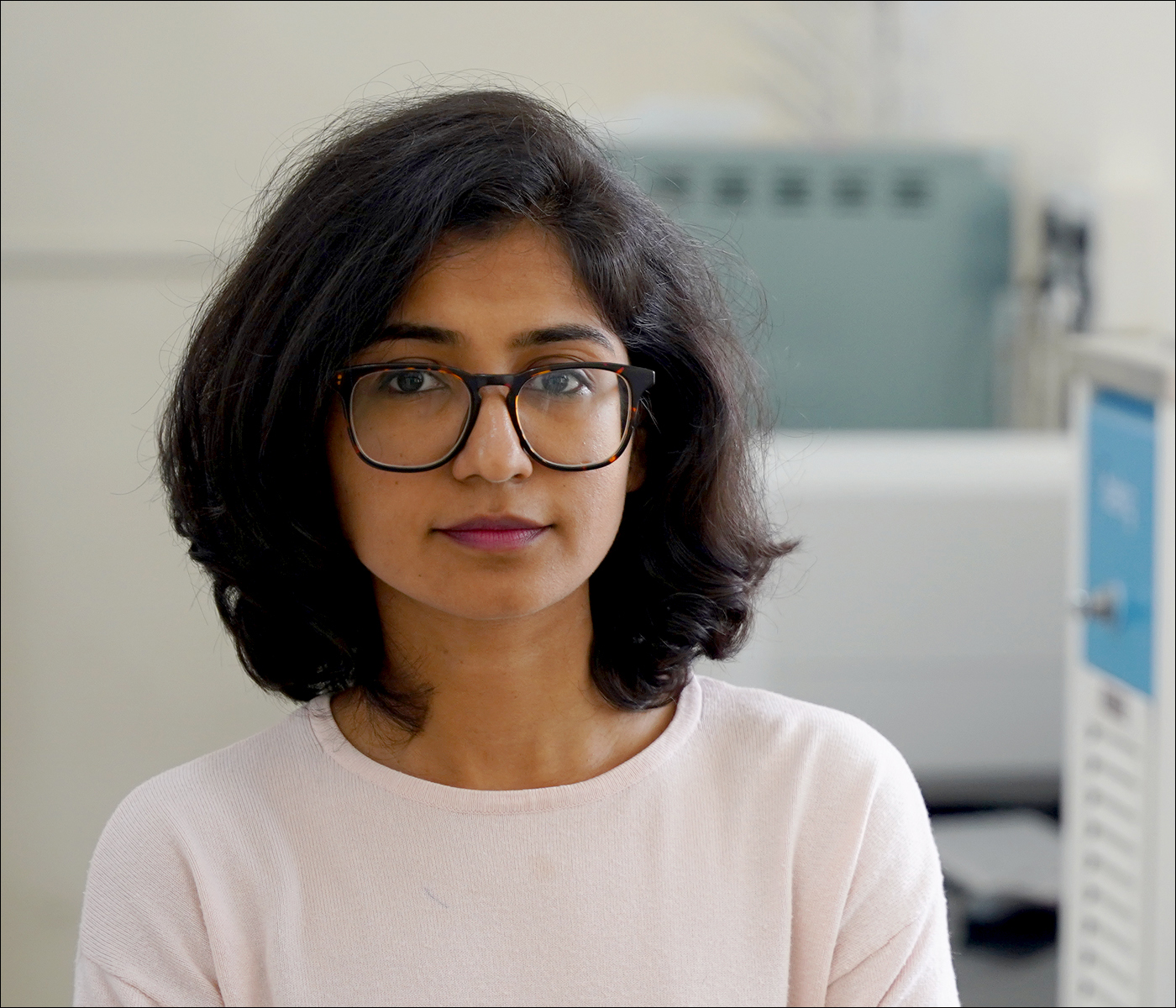Women Scientists in IISc – Dr. Sanhita Sinharay

Photo Credits – Mr. Haridasan
Dr. Sanhita Sinharay is an Assistant Professor in the Centre for BioSystems Science and Engineering (BSSE). She joined IISc in 2021. Her area of research is biomedical engineering. She did her PhD at the University of Arizona and postdoc at the National Institutes of Health in the US.
- When did you first realise that you wanted to be a scientist?
I don’t think there was one particular moment in my life that made me have that realisation. I enjoyed solving scientific questions or problems during my Bachelor’s and Master’s. When I got wider exposure during my PhD to perform laboratory research and experience everything else that came with having a scientific career, I realised that I really enjoyed it and wanted to be a researcher in life.
- What attracted you to apply to and join IISc?
Indian Institute of Science (IISc) stands out in the country and around the globe as a premier institute doing cutting edge research in engineering and science. The brilliant research environment, infrastructure, and colleagues that IISc offers inspired me to apply to this institution for a faculty position.
- What will your research at IISc focus on?
My research group will focus on developing non-invasive molecular imaging tools and approaches focused on Photoacoustic Imaging and Magnetic Resonance Imaging (MRI) to identify real-time biomarkers that can improve detection at early stages and assess early responses to therapeutic regimens.
- Why did you choose this area of research?
This area of research involves a lot of synergy between chemistry and molecular imaging, both areas of great interest to me. I enjoy performing multidisciplinary research and applying it to solve problems that are crucial to healthcare issues at present.
- What are the big unresolved questions in your field?
The unresolved questions are targeted towards understanding if these new approaches in molecular imaging can provide previously unavailable information regarding disease detection at early stages or response to therapy, and how significantly would that impact survival outcomes in patients.
- What is the most important advice you got that you think has helped you in your career?
One of the many pieces of advice I received in graduate school from my mentor has stuck with me till now, which I feel helps train oneself better as a graduate student:
- What makes a good researcher (apart from being driven by curiosity and tenacity)?
Advanced planning, attention to detail and effective communication. I feel that we often ignore the third one as a non-essential quality as a student, and slowly realise, as we advance in our career, how important it is to be able to communicate appropriately.
- If you had any mentors or role models in science, who were they and what do you think you’ve learned most from them?
My PhD advisor has been a mentor in my scientific career who has deeply impacted the way I visualised research and a research career. I’ve learnt to look at a research problem in a different way, beyond a paper as an outcome of the research problem, and also the most important aspect of having a research career: perseverance.
- What is the most fulfilling thing about a life in science?
I think to me the most fulfilling thing about a career in science is the impact of the contribution to society that we make, often unrecognised in the time scale of our career, yet substantial in the long run. An academic career in science is even more fulfilling because when we train students and impart knowledge it eventually helps to carry it forward and in many ways constantly improve upon a concept or idea.Click here for some of the Other Women in ScienceI think to me the most fulfilling thing about a career in science is the impact of the contribution to society that we make, often unrecognised in the time scale of our career, yet substantial in the long run. An academic career in science is even more fulfilling because when we train students and impart knowledge it eventually helps to carry it forward and in many ways constantly improve upon a concept or idea.
Click here for some of the Other Women in Science




